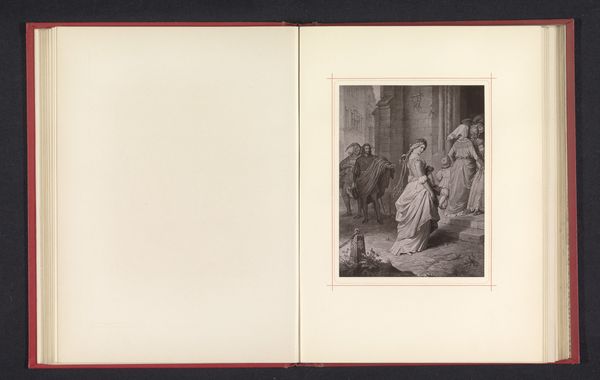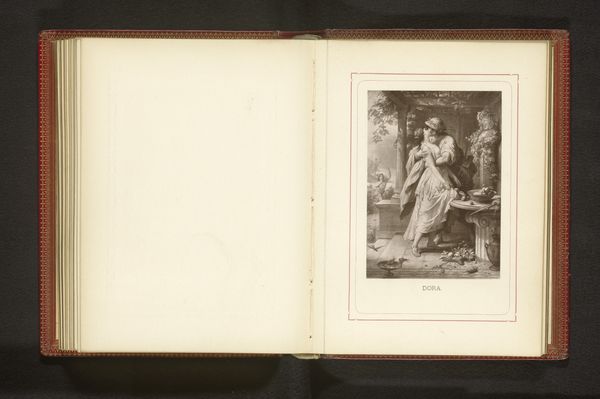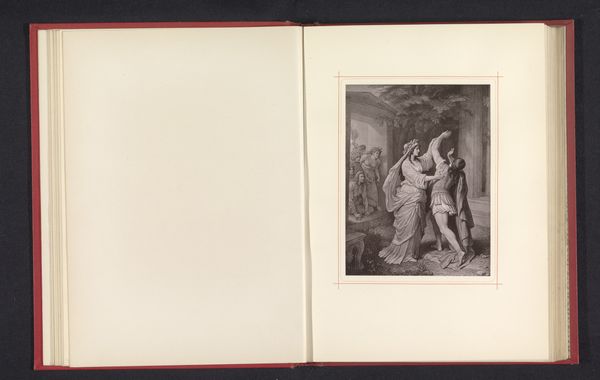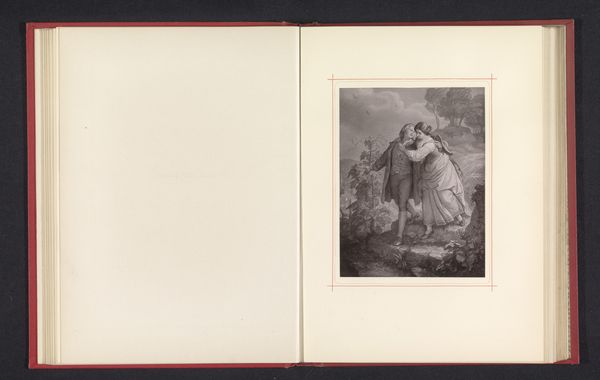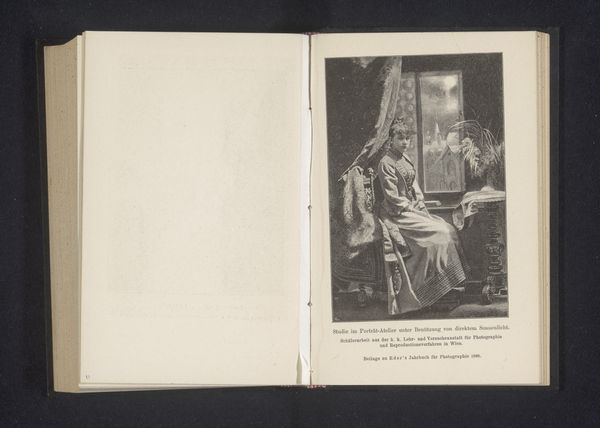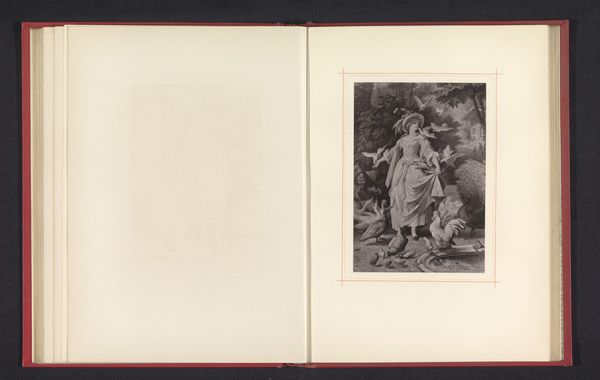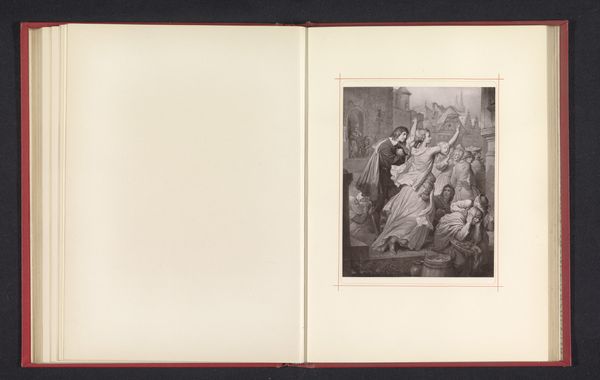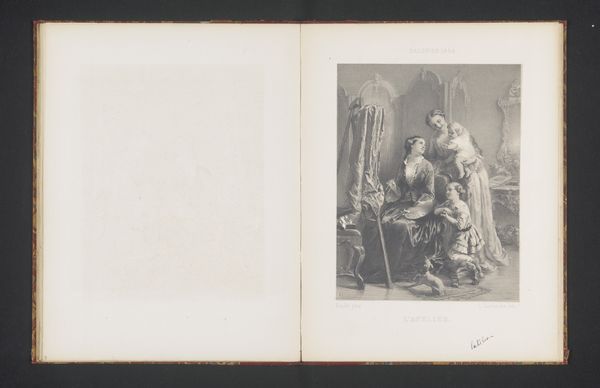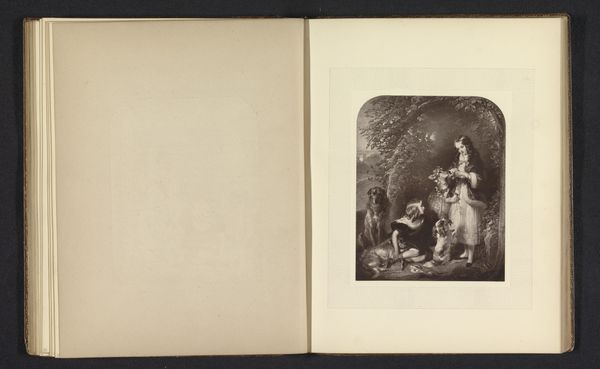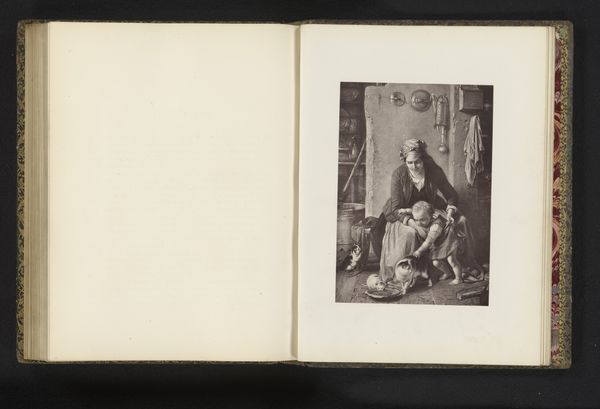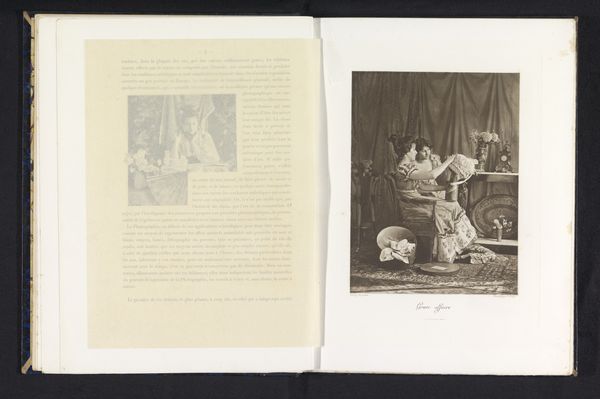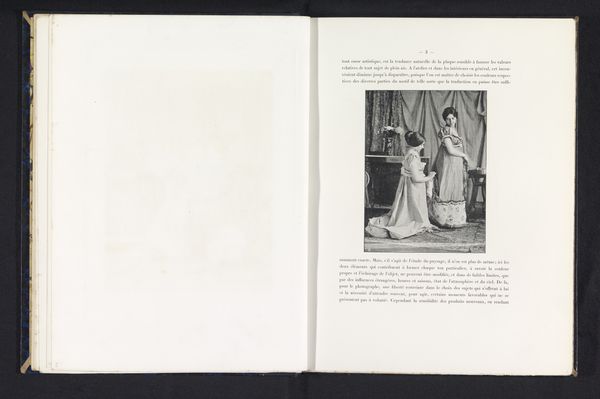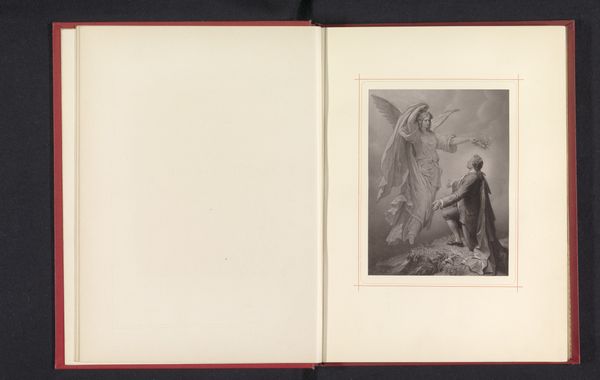
Fotoreproductie van een tekening, voorstellende Eugenia past haar nieuwe sieraden before 1880
0:00
0:00
drawing, print, etching, paper
#
portrait
#
drawing
#
aged paper
#
narrative-art
# print
#
etching
#
paper
#
intimism
#
genre-painting
#
academic-art
Dimensions: height 164 mm, width 115 mm
Copyright: Rijks Museum: Open Domain
Curator: This image before us is entitled, “Fotoreproductie van een tekening, voorstellende Eugenia past haar nieuwe sieraden,” translating to a photographic reproduction of a drawing depicting Eugenia trying on new jewelry. The piece, rendered before 1880, is housed right here at the Rijksmuseum, an etching on paper. It captures an intimate, seemingly domestic scene. What is your immediate response? Editor: My first thought goes to the performance of femininity on display. The etching captures a moment ripe with ritual and societal expectation. The detail, despite being black and white, suggests a richness in texture and an almost performative element to adornment. Curator: Precisely! The artwork provides a glimpse into 19th-century bourgeois life, offering social commentary through its detailed portrayal. We witness Eugenia not simply putting on jewelry but inhabiting a role. The visual weight is clearly on her and her assistant or perhaps her mother—both are enmeshed within strict codes that limit options for how women appear in public spaces. Editor: And what is intriguing is the symbolism within those restrictions. The jewels, the fabric of the gown—these become markers of identity and social standing, communicating power in a highly structured visual language. How much does identity depend upon things like adornment and how little is determined by our personal essence? Curator: An incisive question indeed! The very act of “trying on” implies a construction of self, aligning with gender roles and upper-class expectations of this period. Moreover, this "snapshot" reveals a crucial dialogue that must include those who occupy positions in between privilege and labor. The dynamic hints at what’s to come as industrial labor models evolve in ways that grant a degree of autonomy, despite limitations on power or ownership. Editor: Looking at the etching's aesthetic qualities, it recalls earlier traditions of portraiture where accessories held great significance—rings signifying marriage, for example, or necklaces conveying wealth or social status. However, in this setting we confront anxieties of how meaning gets created as roles become further unglued in an era that prefigures industrial changes on the horizon. Curator: I agree completely. It underscores the importance of art as both a mirror and a critical lens for understanding historical power structures. What we see on display today may, through different symbolic registers, resonate across all times and cultures. Editor: Indeed. Examining such pieces invites viewers to ponder the weight of social conditioning in how individuals performed selfhood historically, an especially crucial study now as society debates the construction of identity in new ways.
Comments
No comments
Be the first to comment and join the conversation on the ultimate creative platform.
